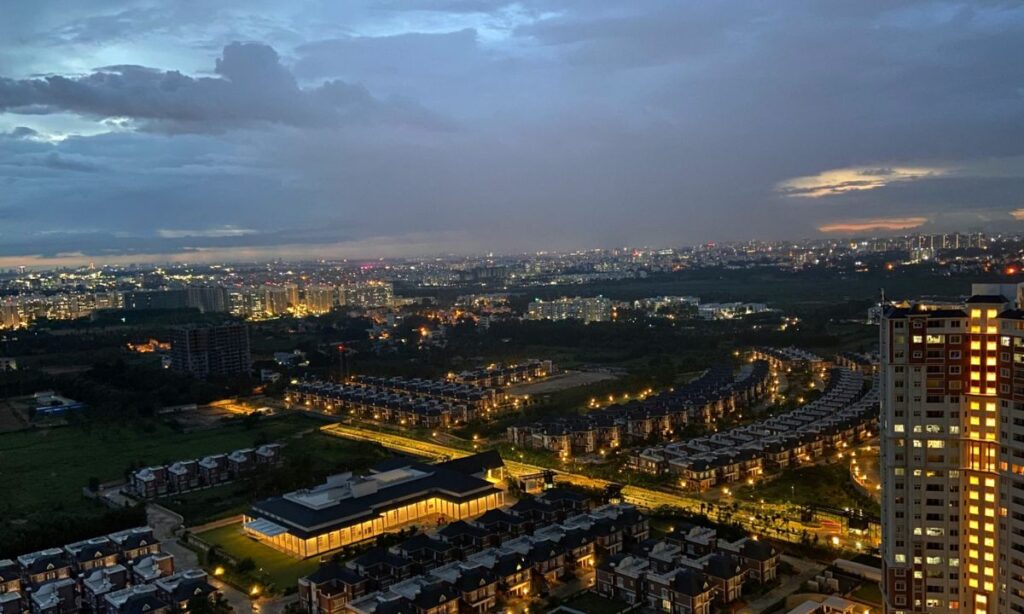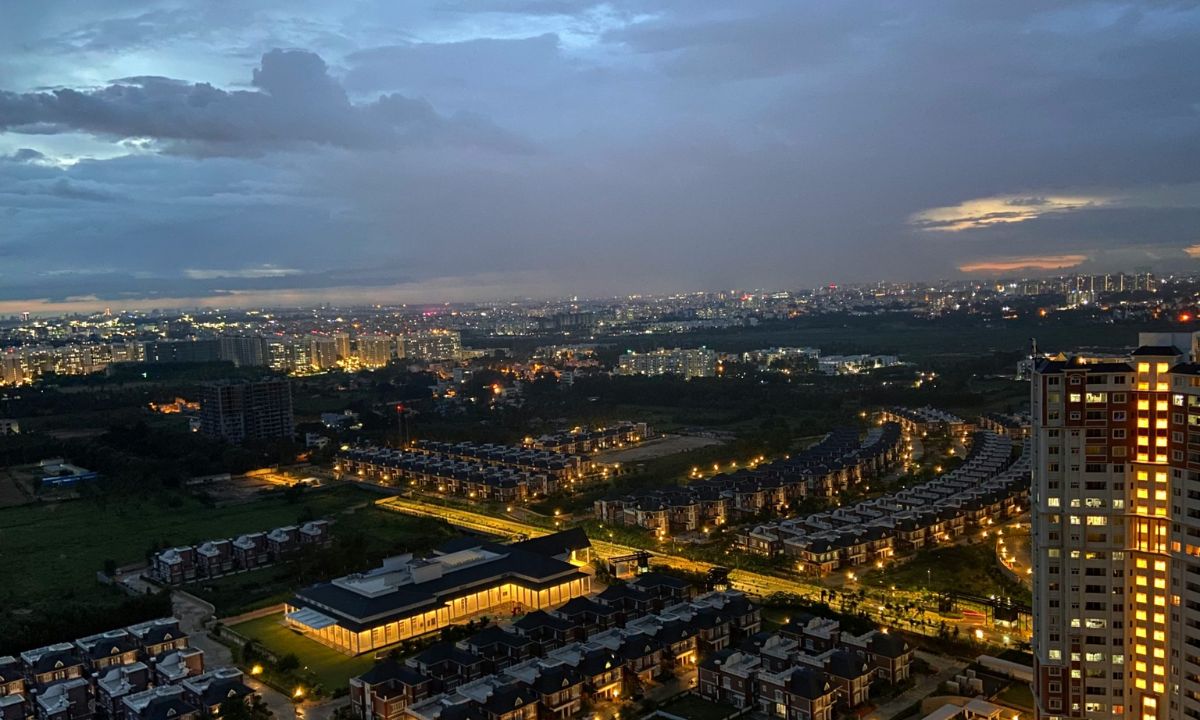India’s real estate investment trust (REIT) market is making headlines again with Knowledge Realty Trust (KRT), co-sponsored by Sattva Group and Blackstone, securing ₹1,400 crore in a pre-IPO round. Set to become India’s largest REIT in terms of Net Operating Income (NOI) and Gross Asset Value, KRT is targeting ₹6,200 crore through its IPO. However, amid this bullish institutional sentiment, stories from Non-Resident Indian (NRI) investors caution about the actual returns from residential real estate investments in India.

KRT’s Strategic Leap Into India’s REIT Landscape
📈 Pre-IPO Fundraising Milestone
- KRT has raised ₹1,400 crore from family offices and high-net-worth individuals ahead of its IPO.
- Filed Draft Red Herring Prospectus (DRHP) with SEBI in March 2025.
- The IPO aims to raise ₹6,200 crore and list on Indian stock exchanges.
🏢 Portfolio Strength and Market Position
- Backed by Blackstone and Sattva Group, KRT owns:
- 48 million sq ft total portfolio.
- 37 million sq ft completed.
- 30 Grade A office assets across six major cities.
- 90% leased, with:
- 76% to Multinational Corporations (MNCs).
- 45% to Global Capability Centres (GCCs).
- Estimated Gross Asset Value: ₹60,000 crore.
- Brand-neutral growth strategy to scale through third-party acquisitions.
“KRT’s diversified office portfolio sets it apart. Its pan-India footprint and strong tenant base offer long-term income stability,” said a senior Blackstone executive.
The Bigger Picture: India’s Growing REIT Market
- Four existing REITs:
- Brookfield India Real Estate Trust
- Embassy Office Parks REIT
- Mindspace Business Parks REIT
- Nexus Select Trust (retail-focused)
- These REITs manage over 126 million sq ft of Grade A assets.
- Since inception, they have distributed ₹21,000 crore to unitholders.
- According to Vestian, 60% of office stock in India’s top 7 cities is REIT-worthy, indicating massive future potential.
Reality Check: NRI Investment Lessons from Hyderabad
While institutional REITs soar, a Hyderabad NRI couple’s real estate story paints a more cautious picture.
📉 Their Investment Journey
- Bought a 3BHK in Mantri Celestia, Nanakramguda in 2010.
- Total investment over 9 years: ₹64.34 lakh (~$111,740 at 2010 rates).
- Sold in 2024 for ₹90 lakh, netting ₹84.9 lakh after deductions.
- Earned ₹12 lakh in rent over 5 years, but only ₹7.2 lakh net after taxes and expenses.
- Total returns in USD: $120,000, just 0.5% annualised over 15 years.
“If that money had gone into the S&P 500, it would be worth over $210K today,” the investor noted.
✅ Quick Summary Table: KRT vs NRI Investment Case
| Aspect | KRT (REIT) | NRI Hyderabad Case |
|---|---|---|
| Investment Type | Commercial Office REIT | Residential Flat |
| Backed by | Blackstone & Sattva | Individual |
| Size | 48M sq ft (30 assets) | 1,198 sq ft (1 apartment) |
| Tenants/Returns | MNCs & GCCs, 90% leased | 0.5% annualised in USD |
| Investment Outcome | Pre-IPO ₹1,400 Cr raised | Disappointing, low USD returns |
| Risk Exposure | Institutional Grade A, diversified | Project delays, low resale value |
🗣️ Expert Take: Don’t Let FOMO Dictate Real Estate Decisions
Key Insights from Financial Planners:
- Staggered Payments Matter: Most buyers pay over time, impacting actual return calculations.
- Loan Costs: Home loan interest can erode returns significantly.
- Rupee Depreciation:
- Buying at ₹45/$ and selling at ₹85/$ reduces dollar returns.
- A 9% INR return becomes ~5% USD after adjusting for currency movement.
- Opportunity Cost: Equity markets often outperform real estate in USD terms.
- Recommendation: NRIs should aim for Indian investments that beat both inflation and currency depreciation.
“Returns may look better in rupees, but in dollar terms, many NRI investors are left underwhelmed,” says Suresh Sadagopan, founder, Ladder7 Wealth Planners.
❓ Frequently Asked Questions (FAQs)
1. What is KRT and who are its sponsors?
KRT (Knowledge Realty Trust) is a proposed REIT sponsored by Sattva Group and Blackstone. It holds a pan-India office portfolio and is preparing for a ₹6,200 crore IPO.
2. How is KRT different from existing REITs?
KRT will be India’s largest REIT by Net Operating Income and Gross Asset Value. It also boasts the most geographically diverse office portfolio.
3. Why are NRIs advised to be cautious with Indian real estate?
Due to factors like rupee depreciation, project delays, loan costs, and low resale demand, NRIs often see lower-than-expected returns in USD terms.
4. How do REITs compare with residential real estate for investment?
REITs offer institutional-grade exposure with regular income and liquidity, while residential real estate carries higher execution risk and lower yield.
5. What is the impact of rupee depreciation on NRI real estate returns?
A depreciating rupee reduces the dollar value of gains when funds are repatriated, significantly affecting overall returns for NRIs.
